Wolves and Wisconsin: Separating fact from fiction

Wolves in Wisconsin
This is a deep dive into the common misconceptions surrounding wolves in Wisconsin, but hopefully opens up a greater dialogue to their future in the state.
MILWAUKEE - Milwaukee and southeast Wisconsin might seem like an odd place to discuss wolves. This highly urban area of the state is far away from the northwoods, but Wisconsin has a unique history when it comes to wolves. Specifically, the Gray Wolf, Canis lupis, once wiped out from the state.
For me, this story all began with a backpacking trip in the early spring 2021. On a three-day hike through the rolling topography of the Harrison Hills segment of the Ice Age Trail, I first heard a wolf. On a clear night that you could see every star in the sky, I heard a pack of wolves howl in the distance followed by dead silence. Temperatures were in the 30s. The surrounding woods of sugar maple swaying in the wind was all I could hear or see after the howl. But no wolf came into view. All there was was ignorance that I thought I was the only one in those woods before that hike.
Fast-forward to January 2024, and now I'm the one driving through the backroads of Rhinelander to hear that same howl in 2021. After two hours and the clock striking midnight, I got nothing but yipping coyotes and some cold hands.
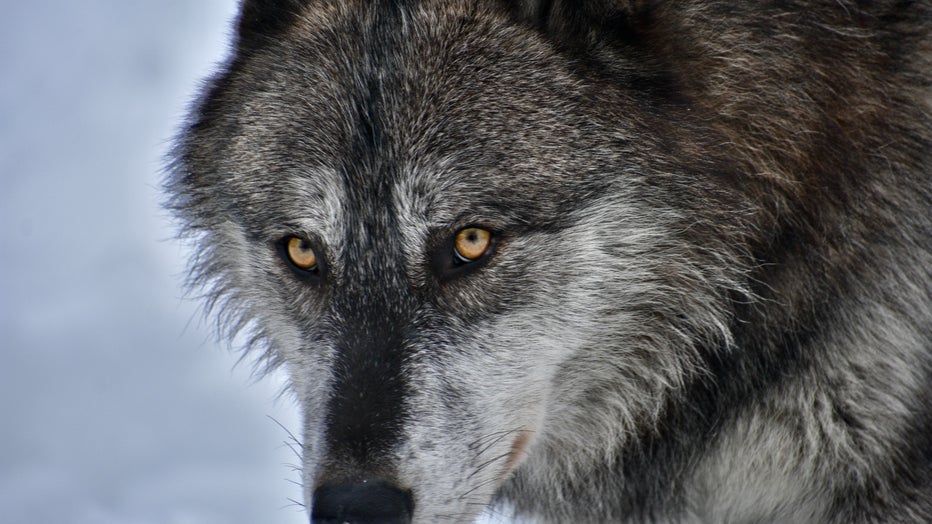
Gray Wolf with a black coat at Shalom Wildlife Sanctuary
To properly do a story on wolves, you have to go where wolves live – which in our lifetime has gotten much easier.
SIGN UP TODAY: Get daily headlines, breaking news emails from FOX6 News
In 1960, wolves were considered no longer present in Wisconsin. Overhunting and habitat loss, like most of our current endangered species, was the main driving factor. But in 1978, a breeding pack from Minnesota migrated in and the wheel of recovery slowly started to turn.
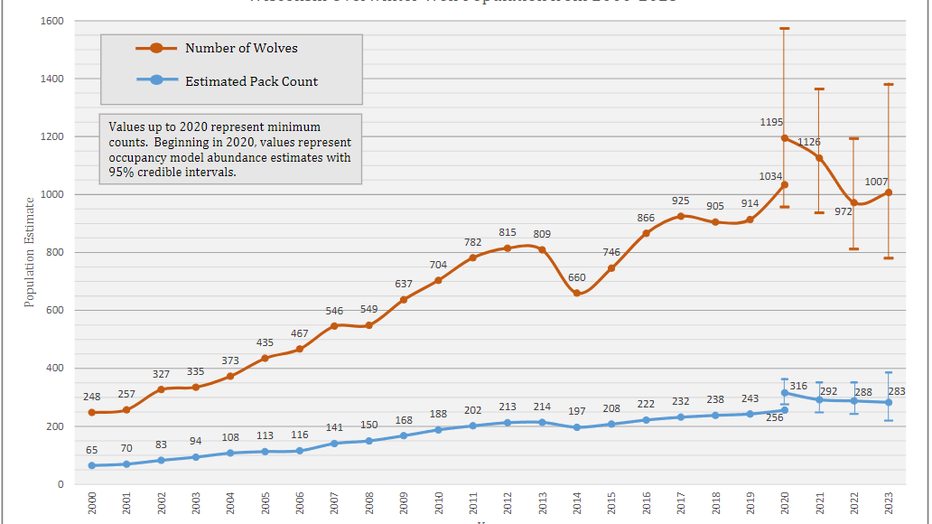
DNR Population survey from 2000 to 2023. Exact numbers since 2020 have been given more statistical analysis to take into account variation and error.
By 1985, Wisconsin issued its first Wolf Recovery Plan -- setting management goals for the return of this apex predator. This was later updated in 2001 with a goal of reaching 350 wolves in the state. Fast-forward to 2020, and we now have more than 1,000 wolves in Wisconsin.
In one human lifetime, Wisconsin went from zero wolves to 1,000. But to really talk about this species, you have to tackle the psychological angle.
Fact from fiction
You likely grew up with wolves in fairy tales and stories that hardly ever depicted them as the good guy. Naturally, myths and misconceptions arise with things that are new or stories passed on from generation to generation. So what is the truth about wolves in Wisconsin? We'll tackle their biggest misconceptions based on public opinion.
Their numbers. Their impact. Their danger.
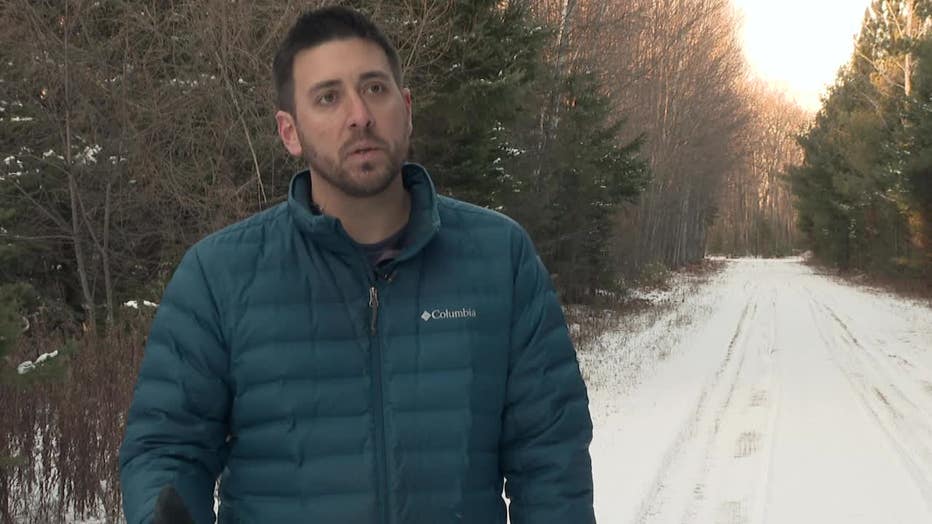
Randy Johnson, Large Carnivore Specialist Wisconsin DNR
I traveled up to Rhinelander, Wisconsin in January to meet with Randy Johnson, the large carnivore specialist for the DNR to talk all things wolves. While we didn't see wolves, Johnson and I came across multiple sets of wolf tracks. Searching for tracks, wildlife cameras, and radio collars are the main tools Johnson and his team use to survey the Wisconsin wolf population.
"Estimates the last several years have indicated around 1000 wolves in Wisconsin," Johnson said.
If there was 2,000 to 3,000 in the state, Johnson would be the first person to know. He cites in his wolf management plan a study by Jennifer Stenglein in 2015 that around 1,000 wolves is a healthy number for the state. We could support more, but the 1,000 number is estimated to be a good balance of habitat and human density that would limit negative interactions – such as eating livestock, added Johnson.
FREE DOWNLOAD: Get breaking news alerts in the FOX6 News app for iOS or Android
That's where another big misconception comes in. How much do wolves impact livestock and deer?
According to Johnson, around two dozen producers (people who raise livestock) are negatively impacted by wolves each year. This comes in the form of wolves killing their animals or harassing them on their fence line. In some years, confirmed complaints are higher and in others they're lower.
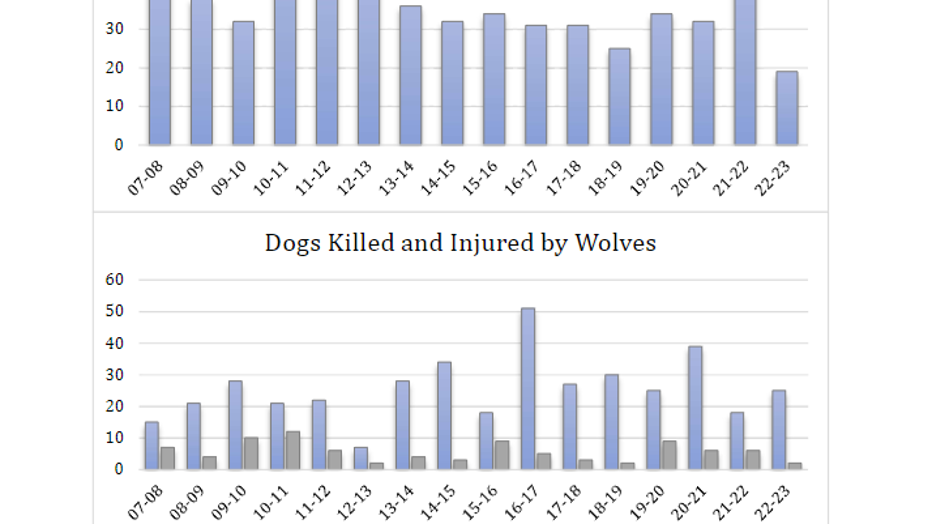
Total confirmed producer conflicts, hunting dog conflicts, and pet dog conflicts
Looking at the above graph, you might be surprised just how many hunting dogs are killed by wolves. This is one of the main methods of hunting wolves in the state. Using hunting dogs to chase wolves to the edge of their territory. In defense, wolves will kill the hunting dogs. Your pet dogs at home, only a handful each year, are injured or killed, according to Johnson's surveys.
Livestock, hunting dogs and other animals that are killed by wolves are reimbursed by the state. Between 1985 and 2021, these reimbursements have cost the Wisconsin taxpayer $3 million total. Remember that number because it will come in handy later.
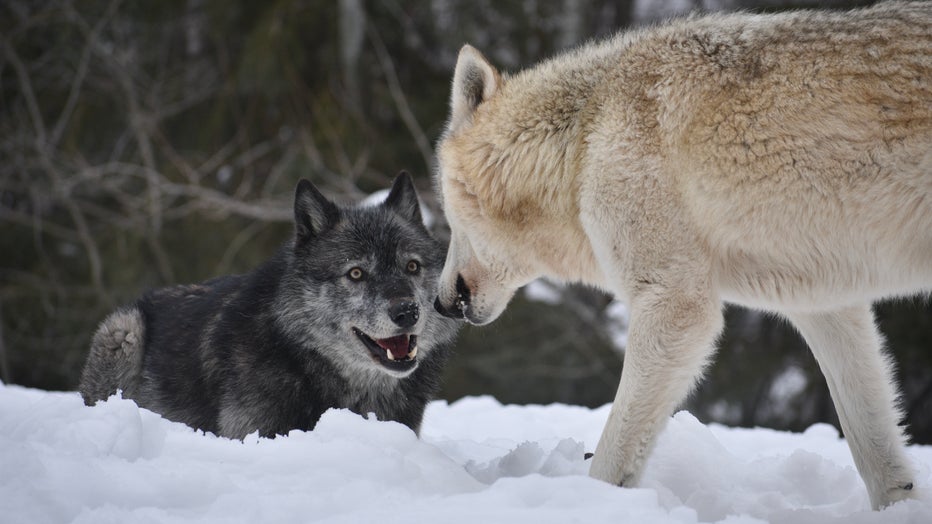
Two wolves playing at Shelom Wildlife Sactuary, West Bend, WI
Deer is where the discussion gets much more into the weeds (literally). Wisconsin has a large deer population and this is the main food source for wolves. According to Johnson and a study by Mech and Peterson in 2003, one adult wolf eats between 15 to 19 deer per year. With Wisconsin being one of the largest deer hunting states in the country, it is reasonable for hunters to be concerned about how wolves will change their hunting season. But does the data show that?

Jennifer Raynor, Assistant Professor of Natural Resources Economics at the University of Wisconsin Madison
"I think it’s safe to say that wolves have not significantly reduced deer population in Wisconsin, we have very large overly abundant deer populations in the state," said Jennifer Raynor, an assistant natural resources economics professor at the University of Wisconsin.
Raynor added there is no in-depth, peer-reviewed study on wolf impacts on deer hunting. However, local densities likely have declined where wolves are present. The data Raynor does have connects wolves to almost everyone.
"In Wisconsin we hit about 20,000 deer on the roads a year," said Raynor.
This adds up to hundreds of millions of dollars in damages from deer just on our roads. Not to mention the overconsuming of forest matter and spread of disease overabundant deer population can cause. The $3 million payout to producers with verified wolf losses, well…
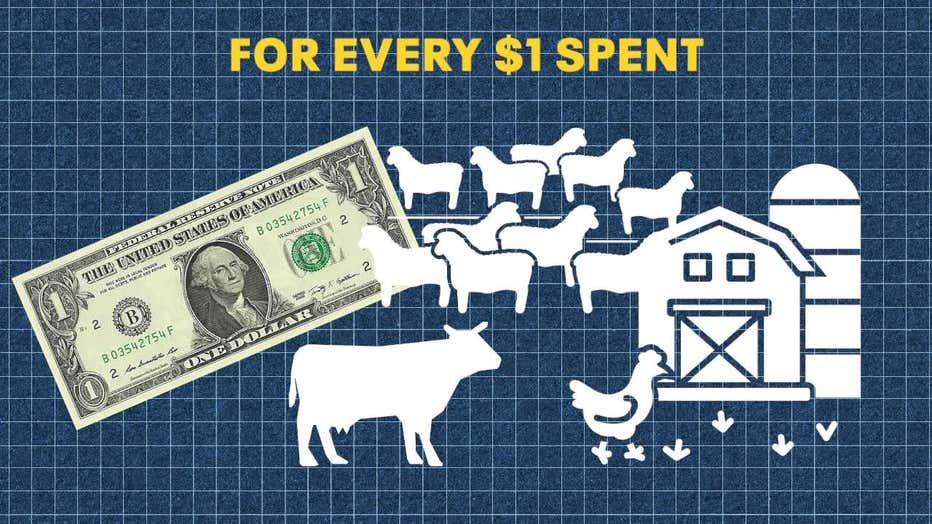
Visual of Jennifer Raynor's research

Visual of Jennifer Raynor's research
"For every dollar that we spend compensating livestock owners for their losses, we gain $63 in savings from not hitting deer with our vehicles," according to Raynor and her research.
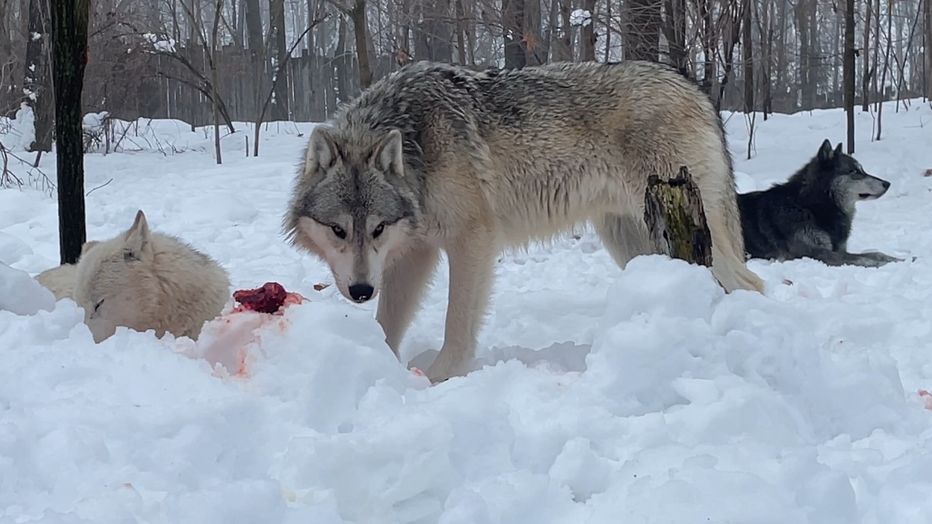
Stone, the Alpha Male at Shalom Wildlife Refuge in West Bend, WI
There's a good financial argument that wolves are worth every penny they cost the state. But the lens of economics and academia can forget the human element.
Finally, how do wolves actually impact your well-being? It's easy to talk about wolves in Milwaukee because we don't have any. But northern cities and towns do.
Like with most apex predators, the human risks are actually very low. No person has been killed by a wolf in the lower 48 states since the 1800s. Alaska has the most recent accounts. But even then , the average of 10 Wisconsinites killed by deer in car collisions each year far outweighs the risk to your health from wolves.
To quote a study in 2011 by Tom Butler analyzing human risks from wolves, "it is apparent that the risks associated with a wolf attack are above zero, but far too low to calculate."
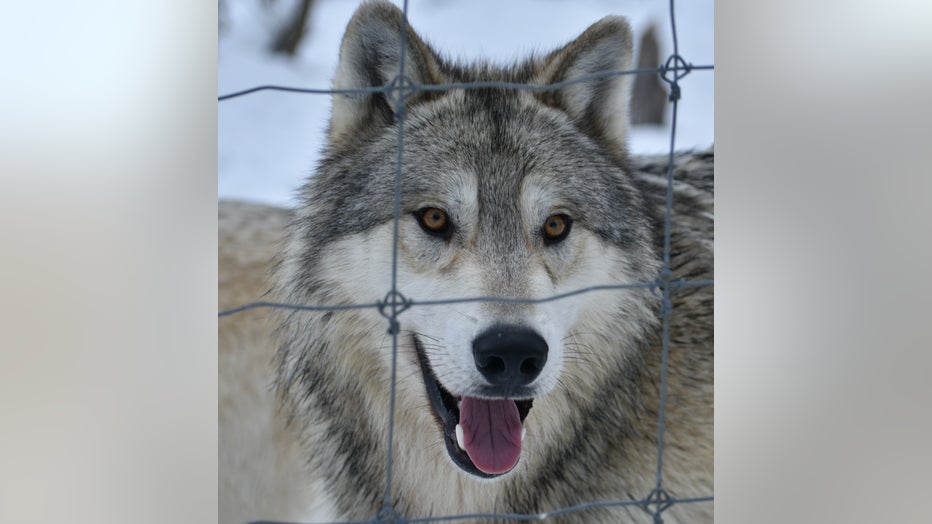
Stone, the alpha male wolf at Shelom Wildlife Sanctuary in West Bend, WI
Getting the misconceptions out of the way, hopefully, we can all look at wolves with an unbiased view. It's hard to do; we literally let them into our homes. Domestic dogs were bred from wolf ancestors. Few environmental issues will elicit such a strong emotional response for or against.
In the coming months we'll talk about their natural history and recovery in Wisconsin, such as what a drop in deer density does to the surrounding habitats. Then, we'll finally tackle the greater question of coexistence with this species as we continue to learn more about their native role in our ecosystem. Wisconsin is one of the few states where, historically, hunting wolves has and will occur. What will that look like in the future?
Native American culture is another huge aspect when it comes to wolves in our state. We will also include in the discussion how Wisconsin's first inhabitants learned to live with Wisconsin's apex predator. I'll also talk with people that have raised these animals for over 20 years to help truly understand wolves in Wisconsin.

